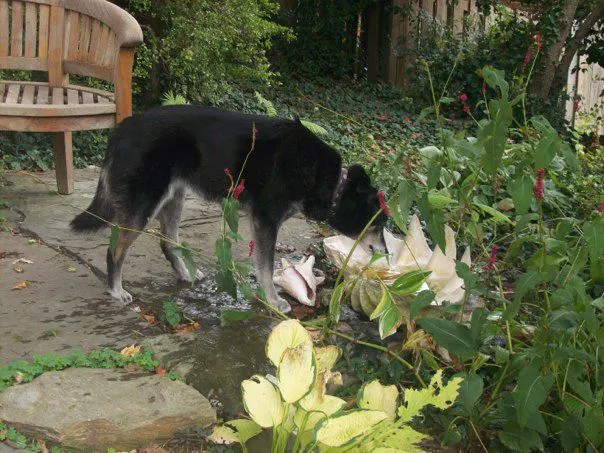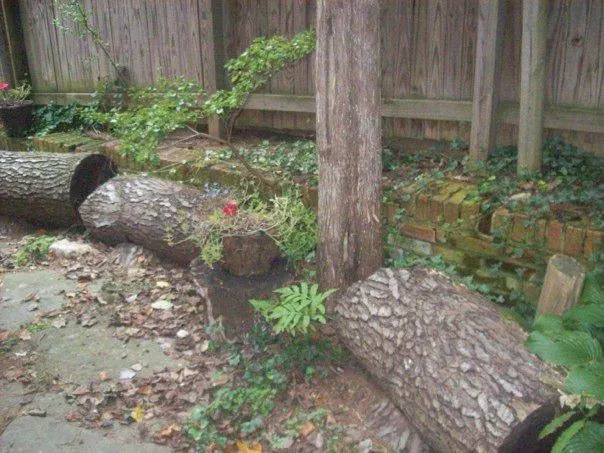
Special post by Carrie Witkop
In my urban neighborhood, just outside of Washington, DC, and just inside the large freeway known as the Beltway, I am known as the composting queen and an environmental pioneer because of some of the ways I save resources and even use them to beautify my yard. Through composting, mulching and collecting rainwater, I reduce waste and redirect it to growing beautiful fruit trees and flowers and creating an urban oasis.
So the folks at The Scramble asked me to share my top tips for how to use eco-friendly gardening techniques to reducing waste and beautifying your yard at the same time:
 Composting
Composting
My kids are the ones who taught us to compost. When they were little, after snack at their nursery school, one child would have the task of gathering the group’s vegetable and fruit rinds, seeds and peels. The children would fill up an old beach pail with their vegetable and fruit scraps to be composted. In those days, and still today, we called it feeding the worms.
Now that my children are teenagers, we still keep our beach pail under the sink where it is easily accessed. When I make soup, spaghetti or whatever it might be, I simply gather the unusable parts of the vegetables and fruits and pop them into the bucket while I am cooking.
After I snack on a banana or avocado I just pop the peel under the sink, and I do the same with my morning coffee grounds, including the paper filter, and my afternoon tea bag.
Sometimes instead of putting the large seeds like avocado pits into the composting I just toss them into my yard and have an occasional avocado sprout up. I then transplant it for the winter and bring it into the house to enjoy.
Steps for Composting
- Put vegetable scraps into a bucket under the sink. No lid is necessary as long as you take it out once a day.
- I have a black plastic barrel, which rolls in place in the corner of my yard next to my compost heap. I dump my pail of scraps into the sealed bin, which helps avoid a rodent problem.
- Twice a year, I shovel out the contents of the black plastic roller into the open-air compost heap in the corner of my yard. My compost heap is a rectangular shape about 3’ by 6′ that I have lined with some fallen tree logs. The designated space makes it look tidy and neat. (Making the outline with fallen tree parts is also an organic, sustainable way to get rid of fallen tree branches.) The compost heap is also used for grass clippings, twigs and branches. We place these directly onto the open-air compost heap and not into the barrel, which I reserve for vegetable and food scraps.
- The compost pile is not stinky or bad looking but if I am planning an outdoor party I look for a wood chipping truck in the neighborhood. They are very happy to dump their chips onto my pile, or into my front yard. I then cover my open-air pile with the fresh wood chips. This way my compost just looks like a nice pile of mulch. The chippers love to get rid of their load when they are in the neighborhood because it allows them to cut down another tree before going to unload all their chips. It is a win-win. I get beautiful free mulch and they get to take another job without having to go somewhere out of the neighborhood.
- Do not expect to get a lot of soil for your garden. The worms eat most of it and it is surprising how little is left. Even so, composting is a good practice because it keeps all these scraps out of our already over stressed sewage system and our solid waste facilities. Also consider that you are not transporting the waste via garbage trucks, which use gas and add to our carbon footprint. This is at least a start at minimizing our waste.
 Grass-Free Lawn
Grass-Free Lawn
I live in an urban area, which is becoming more and more populated with people and fewer animals. I prefer to have a space that is wildlife-friendly. Traditional lawn grass, fescues etc. do not provide much habitat for wild creatures.
Instead, I plant shrubs, flowers and trees that both my family and the animals like. There are many plants that are maintenance free. The original plantings may take you some time but in the long run you will save time mowing grass and it will be better for the environment. (Gas mowers are also terrible polluters.) Here are some of my other suggestions for creating a beautiful, animal-friendly habitat:
- I generally do not use pesticides. I pull weeds after rains and cover soil with fresh mulch to kill the weeds. Because my front yard is loaded with ferns, Solomon’s seal, fig trees, a holly, old cedars, ground covers and a plum tree I don’t need to worry about mowing.
- This unusual combination of ground cover and plants allows me to toss carrot ends and apple cores into my wild lawn. I enjoy watching the squirrels and chipmunks gathering these leftovers and making full use of them. (My husband was surprised to find the squirrel’s leftover apple cores in our gutters.)
- When possible, I try to leave as much nature in my yard as possible in a suburban garden. If a tree falls down, I make an edge with it. If the asters are finished blooming and dried out, I crumple them in my fingertips and let them fertilize the earth where they had previously grown. You can consider your old trees and logs “high end” real estate for the native chickadees, sparrows, cardinals and squirrels. They line their nests with the precious bark.
- Turn an accident into a gift: I recently had a large oak tree fall. I cut the trunk up into benches, seats and plant stands. I placed these new “seats” around my BBQ. I love to sit on my rustic bench while my husband grills the flank steak or veggies for dinner. I feel like I am enjoying life in a mountain camp. The chairs are upright and the longer log is placed on the side to accommodate two or more people as a bench. I put wedges underneath to stop them from rolling.
- If you do plan to attract wildlife, a water source is important. I fill an enormous clamshell with water every day for the birds. The toads love the overflow and I am sure other animals use this water. The clamshell is the animal gathering spot and is in front of my picture window, which allows us all to enjoy their goings on. Anything that holds water can be used, simply set on the ground — the more natural the better.
Rain Barrels
Water is a precious resource which is becoming ever more so. Last year I installed a number of rain barrels in my yard. These barrels collect the rain from the roof. The rainwater runs down the gutters, and is directed into my barrels. Mine are unobtrusive retrofitted, reused commercial food containers that hold 50 gallons of rainwater. I am then able to attach hoses to them to water my garden. (Some local governments provide rebates and assistance if you decide to install a rain barrel or two.)
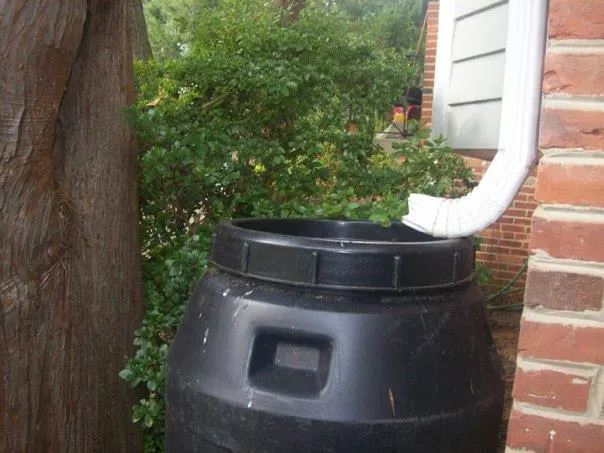
I hope these few simple ideas might get you started on a more sustainable yard. For more tips on creating an eco-friendly and beautiful habitat, visit these sites.
Garden in an Environmentally Friendly Way
17 Eco-Friendly Landscaping Ideas
Organic Gardening Tips – Creating a Sustainable Garden
And if you want more tips for eco-friendly living, check out our post on simple ways to reduce food waste and 3 ways to use up vegetables before they go bad.

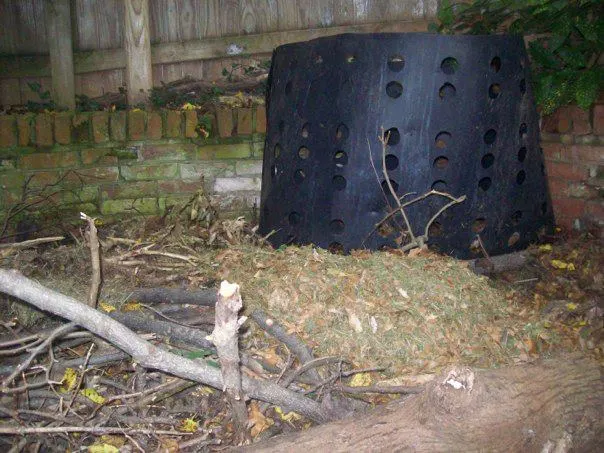 Composting
Composting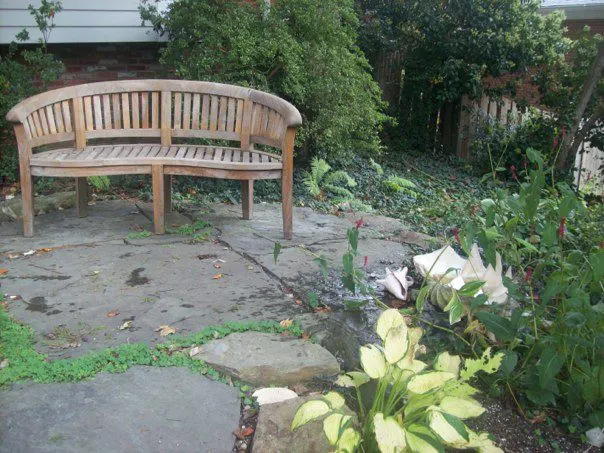 Grass-Free Lawn
Grass-Free Lawn 